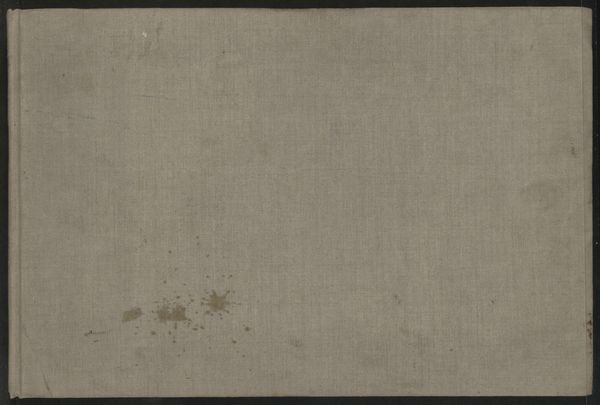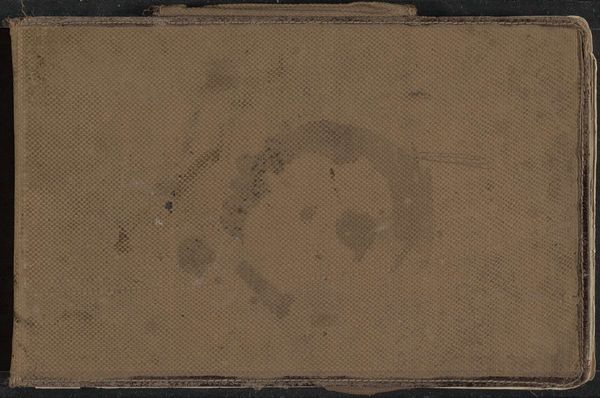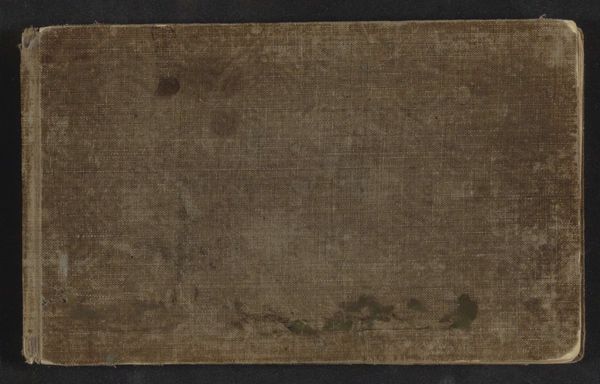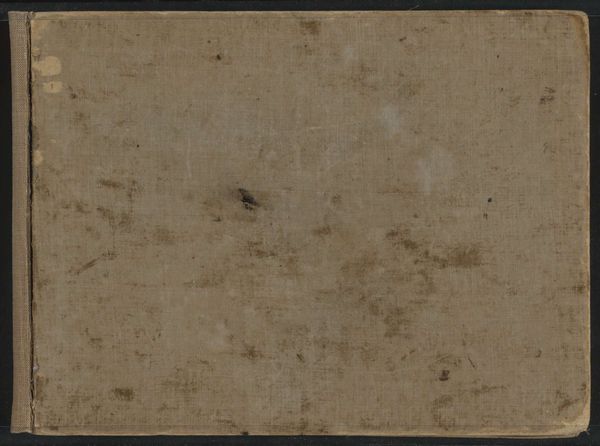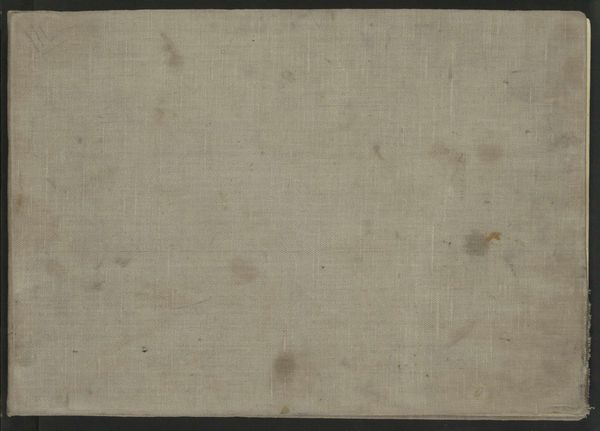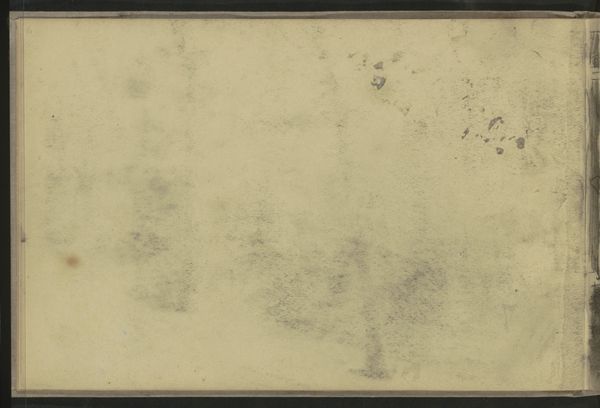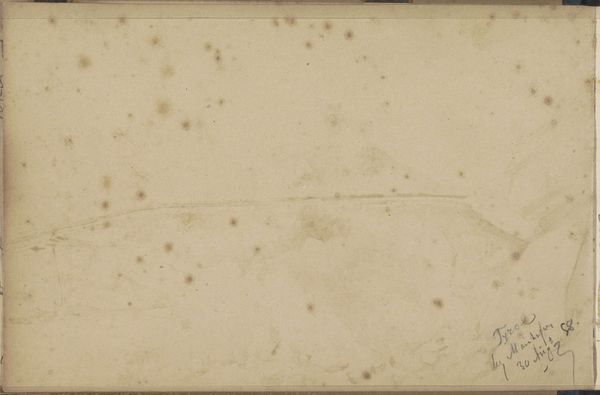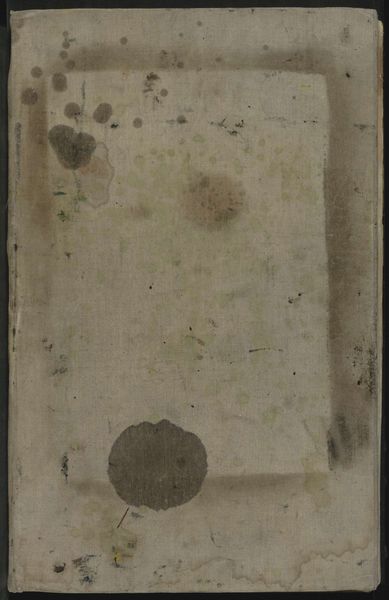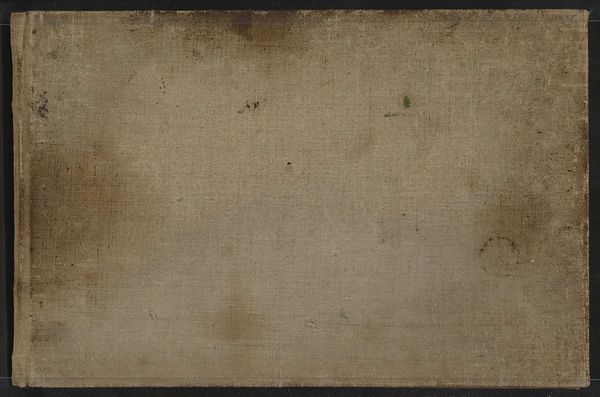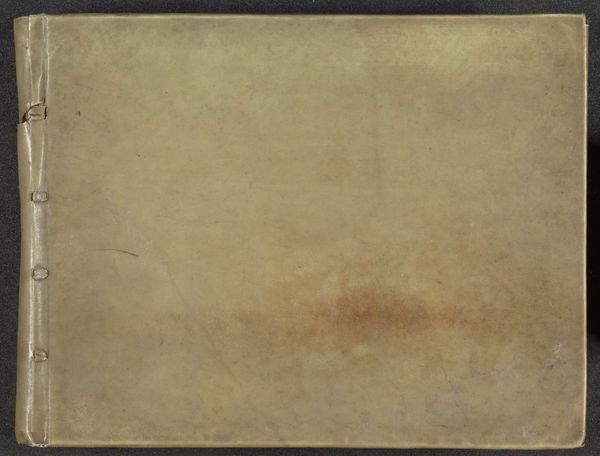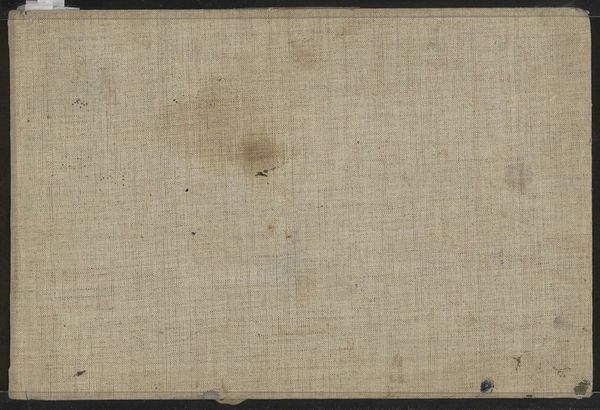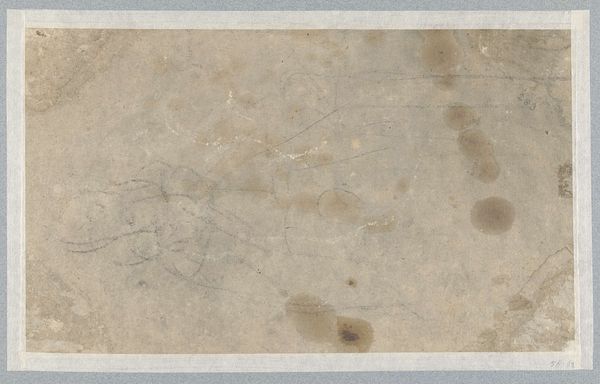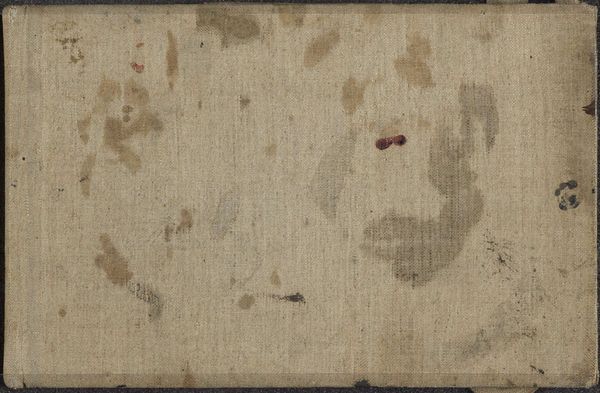
Dimensions: height 250 mm, width 328 mm, thickness 10 mm, width 665 mm
Copyright: Rijks Museum: Open Domain
Editor: Here we have Cornelis Vreedenburgh's "Sketchbook with 22 Sheets," dating between 1890 and 1946. It's a mixed-media drawing on paper. It almost looks like the blank endpapers of a book, a place for things yet to come. What do you see in it? Curator: What strikes me is the tension between the intimate act of sketching, likely done in private, and its eventual public display in a museum. Think about the role museums play: transforming personal items into cultural heritage, isn’t it? How does this interplay influence our viewing of the object itself? Editor: That's an interesting point, to think about it as personal turning into public. I was focused on the actual object itself, it has stains on it that might be paint or maybe even coffee. Curator: Indeed. Consider the sketchbook's materiality—the paper, the stains—evidence of the artist's hand, his process, his very life! How does seeing these intimate traces alter the way we perceive Vreedenburgh and, perhaps more broadly, the image of the artist? Is it a romantic view of art? Editor: I guess, yeah, I was romanticizing it a bit, imagining him out in a field sketching landscapes and absentmindedly spilling things on the pages! Now I see the public image of the artist gets constructed through displaying even their most private creative experiments. Curator: Exactly! And understanding that construction allows us to think critically about how artists are valued and remembered, which inevitably affects how they are funded, collected, and exhibited. Editor: Wow, I will never look at a sketchbook the same way again! This made me see how context shapes perception, and it gave me a whole new perspective on this unassuming artwork. Curator: That's the magic of engaging with art through history. Every mark holds a story, both personal and societal.
Comments
No comments
Be the first to comment and join the conversation on the ultimate creative platform.

